Living Voice OBX-R80 X-OVER Loudspeakers Pair
Ultra high performance audio products for the world’s most discerning music lovers.
DESIGNED & MANUFACTURED IN ENGLAND
“With Living Voice I completely reach my maturity after years of research and listenings. It's a magic design.”
Gerardo Ventura, Playstereo, 2017
“It no longer really makes sense to talk about the sound itself but rather how absolutely wonderful the music becomes. I’ve never had such a completely revelatory and unexpected experience in my home audio life.”
“I felt it was extraordinary to listen to music in this way and come away in awe at the sheer emotional and connective power these speakers possess.”
6Moons, Edward Barker, OBX-RW
“What is most alluring about these speakers is that they bring out so much in your record collection - great music becomes fantastic, addictive and totally engrossing.”
Jason Kennedy, HiFi Choice, UK
Living Voice R80 OBX X-OVER - External Crossovers
The R80 is a sophisticated and uncompromised 2-way loudspeaker that combines the visceral thrill and lyricism of our Vox Olympian horn loudspeaker with the musical coherence and tonal beauty of our Auditorium Series.
It shares the same musical values and priorities as all Living Voice loudspeakers, designed for discerning listeners who share our passionate love of music.
Less can be more. It just takes longer
To reach our goal we chose a symmetrical mid treble/ mid (MTM) two-way driver topology in a reflex-loaded enclosure using two state-of-the-art 8″ bass/mid drivers and 34mm tweeter. We set out on this path several years ago and here we are – 2023, and the R80 is born.
It is a complicated business making something simple. The past 12 months bear testament to this with painstaking incremental progress and seemingly endless iterative developments on both the cabinet tuning and crossover.
R80 Series
As with all Living Voice loudspeakers the precision-calibrated crossover components are largely proprietary and are either made by hand in-house or by specialist suppliers specifically for this model. The crossover topology has been arrived at through a 4-year empirical development programme.
The R80 has a unique cabinet construction that is a further development of what we have evolved for the Auditorium Series over the past 30 years. This translates beautifully into the R80 design aiding its natural tonal filigree and easy dynamic contrast.
The form factor of the R80 is clean, simple, and unornamented, relying on classical golden ratio proportions and premium materials which makes for what we hope is a timeless aesthetic.
It has a wide bandwidth and deep extended bass with a benign amplifier load that deviates by only 4 ohms from 120 Hz to 20 kHz. Overall sensitivity is high, making life relatively easy for all types of partnering electronics and playing to the strengths of single-ended triode amplifiers, including those of 7–10 watts.
The R80 brings a new level of performance to the Living Voice range with a natural tonal response across all types of music. The sound quality is sophisticated and transcendent, and we hope that everyone who buys a pair has their passion for music reignited.
R80 has been a process of patient development. It is a loudspeaker for music lovers who listen with their feelings as well as their ears.
Living Voice products
At the high-end of audio design, art and science merge. The most revered audio designers are no longer strictly concerned with the objective world of measurements and specifications. Instead they explore the world of human expression and human sentiment as captured in the recorded musical performance. This is an exploration guided not by machines and technology, but by tacit knowledge, intuition and musical sensibility.
There is a vast legacy of music captured on recordings dating back to the beginning of the last century. These recordings allow us to see into the times and the minds of the music’s composers and performers with a remarkable sensitivity and clarity. Music conveys the subtlety and fathomless depths of human experience and is one of our most profound and affecting art forms.
All Living Voice products reflect our desire to provide the committed music enthusiast with a coherent, artistically convincing and emotionally engaging experience.
This approach originally led us to develop the Auditorium loudspeaker design. It remains the case today — if we can’t find a product we consider resolves a particular issue to the performance level we aspire to, then we’ll examine the possibilities of creating it ourselves. This is rarely driven primarily by cost or marketing considerations in the conventional sense. We prefer to think of it as a refusal to compromise (or enthusiastic bloody-mindedness, if you prefer).
Living Voice
Living Voice was established in 1991 and is based in Derbyshire, England.
You can find out more about us by downloading our ‘Book of Products’
OBX-R8 Specification
- SENSITIVITY: 92dB (2.83v @1m)
- NOMINAL IMPEDANCE: 6 Ohms
- MINIMUM IMPEDANCE: 4.5 Ohms
- LOADING: Reflex port to rear of cabinet
- FREQUENCY RESPONSE: 25Hz–20kHz
- POWER HANDLING: 100 Watts
- CABINET DIMENSIONS: W 310mm × D 423mm × H 1090mm
- PLINTH: 490mm wide at the front, tapering to 430mm wide at the rear, × 423mm D × 60mm H. Black satin finish.
- CROSSOVER DIMENSIONS: W 120mm × D 450mm × H 270mm
Technical Specifications & Available Finishes
- Benign impedance characteristic
- High sensitivity wide dispersion MTM topology
- 36mm dense hardwood composite enclosure. Interior lined with maple veneer
- Stiff internal triple bracing
- Living Voice proprietary hand-wound air core inductors
- Optimised crossover layout, mechanically isolated with star earthing
- Crystal oriented internal wiring harness
- Proprietary non-inductive wire-wound resistors
- Proprietary Living Voice polypropylene capacitors
- Gold WBT binding posts
- HF DRIVERS: Scanspeak Ellipticor 34mm Dome tweeter 4ohm. Elliptical Voice coil. Neo AirCirc 120mm
- BASS / MID DRIVERS: Scanspeak Ellipticor 21cm Midwoofer 8ohm. Paper cone. Elliptical Voice Coil. Neo AirCirc.
- DEEP CRYOGENIC TREATMENT: Applied to WBTs, internal wiring harness and select crossover components
- INCLUDED ACCESSORIES: Accessory Box with 8 pcs of spikes, floor protectors and 2 spanners enabling easy height adjustment of the loudspeaker in-situ: 1 spanner for rotating the spike and 1 for locking it.
- AVAILABLE FINISHES: Cabinets made in premium furniture grade, book-matched veneers. Outboard crossovers (where supplied) finished in matching book matched veneers. Glossy Ebony or Satin Ebony/ Glossy Santos or Satin Santos/ Pippy Oak
Designer Kevin Scott on creating a completely new loudspeaker.
To date we have had two distinct loudspeaker families at polar opposite ends of the market; the Auditorium Series and the Vox Series, both aimed squarely at the most discerning music lover and both optimised for Class A valve amplification.
The gulf in size and complexity between them could not be greater and for an age I have wanted to create something that combined the scale and physical thrill of the Vox Olympian with the seamless coherence of the OBX-RW4, which is at the top end of our Auditorium family.
Before arriving at the R80 concept, I had long been fixated on the idea of a ‘value-engineered’ iteration of one of our horn systems. We had already made a bespoke commission for the Spiritland cocktail bar & listening venue at King’s Cross, which had successfully explored some of these ideas. Still, no matter which way you cut it, a horn speaker done properly is always going to be exclusively big – or maybe that should read ‘huge’ – and will be necessarily expensive. I wanted a speaker that was much more democratic in every way.
What led you from that idea to the R80 as a concept?
I had a minor epiphany at Munich High-End 2019 while playing the OBX-RW4. They were positioned in front of the Vox Olympian & Vox Elysian horn system playing a selection of ‘take no prisoners’ music, including Beethoven Symphonies 5 and 6 from the John Elliot Gardener cycle on the ARKIV label. We played both symphonies right through without interruption, followed by the Joyce DiDonato album of Handel Arias, a rollercoaster ride that lights up the soul.
Throughout the day, many people assumed the Vox Olympians were playing, and they expressed their delight as such. This was fate having a word with me. It was a key experience that made me look away from a path derived from the Vox Series towards an MTM (mid / treble / mid) two-way design taken to its absolute maximum potential, and this marked the beginning of a journey of exploration that led to the R80 design.
The R80 shares the virtues of both design approaches whilst gaining unique performance advantages in the process. It successfully bridges the gap between our two loudspeaker families in both size and complexity.
Does the R80 share any similarities with the Auditorium Series?
Only the MTM driver topology and the reflex loading. That’s it.
Are there technical advantages to MTM?
Absolutely. I think of MTM as the ‘Occam’s Razor’ topology. It has holistic elegance and pushes at open doors.
Two 8” bass / mid drivers working in parallel can generate the scale, heft, and dynamic range of a single 12” driver, except with an upper-frequency range performance that sails cleanly up to the high-mid range. A 12” driver cannot do this without introducing significant break-up modes at and above crossover – break-up modes which ‘haze’ the background and introduce grain and hash. The paralleled drivers confer two distinct benefits: allowing the rest of the bandwidth to be covered by a single H/F driver working comfortably two octaves above its natural resonance (Fs) and facilitating a more accurate crossover execution than could be achieved with a single 12” drive unit. So, in one fell swoop, the MTM topology elegantly obviates the need for a three-way design with its associated complexity and covers the full bandwidth with a single crossover band.
There’s more. The list of advantages is compelling – the paralleled bass/mid driver operation brings the gift of increased sensitivity in a 3dB gain, in other words, a halving of amplifier power for any given volume level. This is definitely to be embraced, particularly if you like Class A triode amplifiers. From a musical point of view, having what is effectively a 12” driver working right up through the mid-range makes pianos and mezzo-sopranos sound palpable and real, with believable conviction, body, and gravitas – the music lives and breathes.
What can you tell us about the R80 Crossover?
The crossover is the DNA of a loudspeaker, determining 90% of the speaker’s attributes; it affects the tonal balance, the driver integration, on-axis — as well as off-axis — performance, impedance characteristics, power response, electrical phase and the acoustical phase. It is possible to make dozens, if not hundreds, of crossover designs, all with the same drivers in the same cabinets and all with different strengths and weaknesses.
The crossover determines the speaker’ performance, not just across the crossover band, but above and below it too. In fact, everything other than the bass alignment is in the crossover domain, and the key is to work empirically and iteratively in logical steps. Measurement techniques are always qualified by listening, and this was the reciprocal process by which the R80 crossover was evolved and resolved, all with reference to programme material in the subjective domain.
What is in the R80 crossover?
The internal wiring harness uses our crystal-oriented 2-core deep cryogenically treated copper. As with all Living Voice speakers, the precision-calibrated crossover components are made by hand in-house or by specialist suppliers specifically for this model. The R80 also incorporates a conjugate load network (LCR) that sits across the input terminals, making the load characteristic unusually flat. The lowest impedance is 4.2 ohms at 126 Hz, rising slowly to 9 ohms at 1kHz and then gently dropping back to 6.5 ohms at 20kHz. This is a dream situation for a valve amplifier.
Is there an outboard crossover version?
It wouldn’t be a Living Voice loudspeaker if we didn’t offer a choice of inboard (IBX) and outboard (OBX) crossovers.
What are the advantages of an outboard crossover?
All crossover components are microphonic to a greater or lesser extent, and locating these outside of the high-energy environment of the main cabinet allows for a calmer resolution of dynamics, purer tonal shape and colour, and improved coherence during high density and heavily modulated passages.
We recognise the convenience and domestic appeal of the inboard configuration and have gone to great lengths to optimise the component layout of the IBX version, implementing damping techniques to minimise the aforementioned microphonic effects. I am very happy with the balance that we have achieved.
Why is it called the R80?
Because it has an 80-litre enclosure and it’s reflex loaded. Simple really. We had been referring to it casually as the ‘R80’ throughout its development, and at any point when we discussed a new name, we would always say, “What shall we call the R80?” So, the name stuck. It’s logical, and it rolls off the tongue. I like it.
What can you reveal about the cabinets?
Just as different diaphragm materials used in drive units have clearly audible signatures tonally and dynamically, so do cabinet materials and the techniques and glues used in their construction.
Making the same speaker from ten different cabinet materials reveals ten varying sound characters. We have painstakingly developed our cabinets slowly and methodically, using a broad spectrum of material densities and compositions. This has been a fascinating and instructive journey, with results sometimes flying in the face of expected or even desired outcomes.
The R80 cabinet further develops what we have evolved over the years. It allows the performance of the drive units to shine and the cabinet’s contribution to be benign; neither under-damped nor over-damped, it aids the natural tonal filigree and the easy dynamic contrast of the music.
Scanspeak Ellipticor Dome Tweeter and Ellipticor Midwoofer paper cone. Air-circ Elliptical core.
I was very tempted by them on paper. The HF unit has a big 34mm fabric diaphragm with a huge motor structure and exceptionally low resonance frequency – also an unusually flat impedance characteristic. This driver simply begged to be used in an MTM topology with 2 of the 8” bass /mid drivers from the same product family. The Ellipticors are the most technically ambitious drivers Scanspeak have ever produced with impeccable engineering tolerances – as good as I have seen. Their motor structures are highly unusual in that they use elliptical pole pieces and voice coils to eliminate the inherent breakup behaviour of traditional circular motor structures.
They are extremely high-tech, yet retain some older, tried and trusted diaphragm materials – paper and treated fabric. These materials have stood the test of time as the most tonally natural choices, exactly what I would want if Living Voice were commissioning a bespoke driver. Well done, Scanspeak.
What’s the most important thing when designing a new loudspeaker?
A love of music, listening skills, and time.
A great deal of time.
What motivates you during the creative process?
A hi-fi system, or in this case, a loudspeaker, should allow free access to the ease of navigation through any musical landscape.
Take the Floristan Trio performing Beethoven’s Opus 70 & 97 ‘Archduke’. For me, this is time travel. We are listening to Beethoven, who is speaking directly to us from 200 years ago. Getting to this level of free immersion is tantamount to an obsession, and it gives me the energy to keep at the design work until this transcendent state is available ‘on tap.’ Having Beethoven’s inner world transposed into my inner world without mediation – this is the goal.
How would you describe the sound of the R80?
Immersive, human, and transcendent. A loudspeaker should be a passport to whichever musical constellation you wish to visit, and for me, the R80 does this and more.
What music did you listen to during the development and voicing?
I listen to a lot of music all the time, and my music collection is quite extensive, so I have a wealth of beloved music I can reference. During the creation of the R80’s I listened to a wide range; some old, some new, some analogue, and some digital, but all familiar and artful performances of equally artful music. These are ‘data sets’ for me that are rich in depth, not just generic genres (if that’s not a tautology) but specific performances I know and love. This means I can capture the gestalt of the music during the design process because I know where this music’s gestalt lives.
Certain musical performances shine a particularly critical light on the successes and failures of the compromises you must inevitably make in audio design.
It’s hard to pick just a few examples, but as a ‘starter for ten,’ one might consider the selection below.
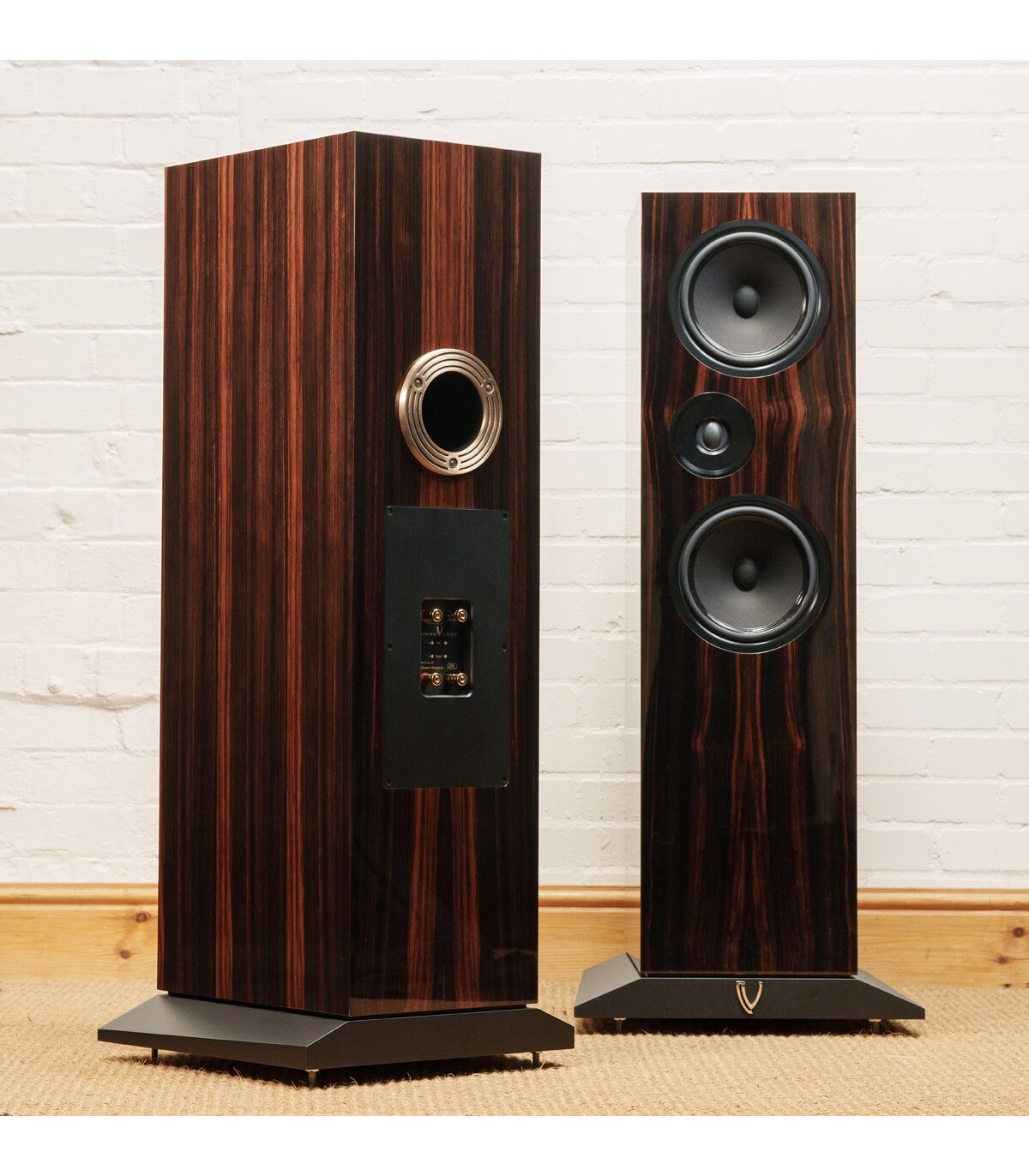





























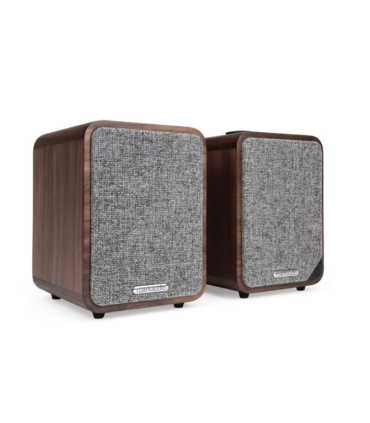


![Bowers & Wilkins B&W 606 S3 Loudspeakers pair [2nd hand]](https://www.playstereo.com/24635-home_default/bowers-wilkins-bw-606-s3-loudspeakers-pair-2nd-hand-.jpg)
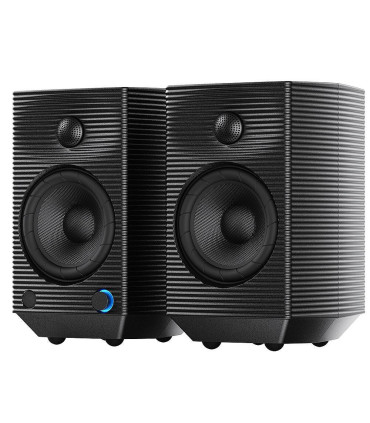



![Q Acoustics 3020c Bookshelf Speaker Pair [b-Stock]](https://www.playstereo.com/23656-home_default/q-acoustics-3020c-bookshelf-speaker-pair.jpg)
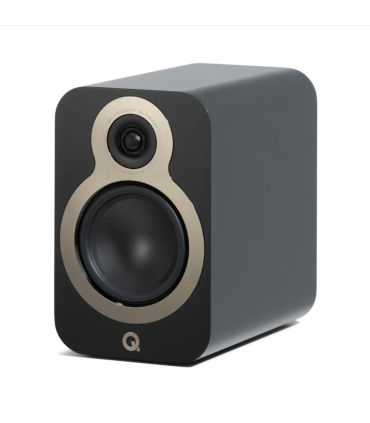
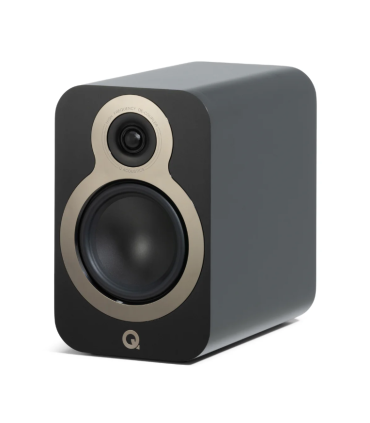
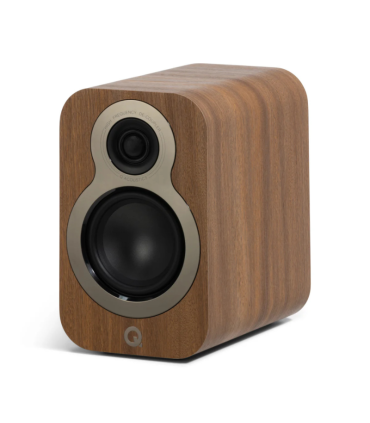
![ELAC VELA BS 404 Loudspeakers pair [2nd hand]](https://www.playstereo.com/23447-home_default/elac-vela-bs-404-loudspeakers-pair-2nd-hand-.jpg)



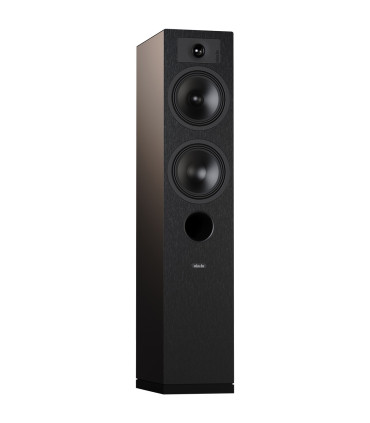


















Leave a review